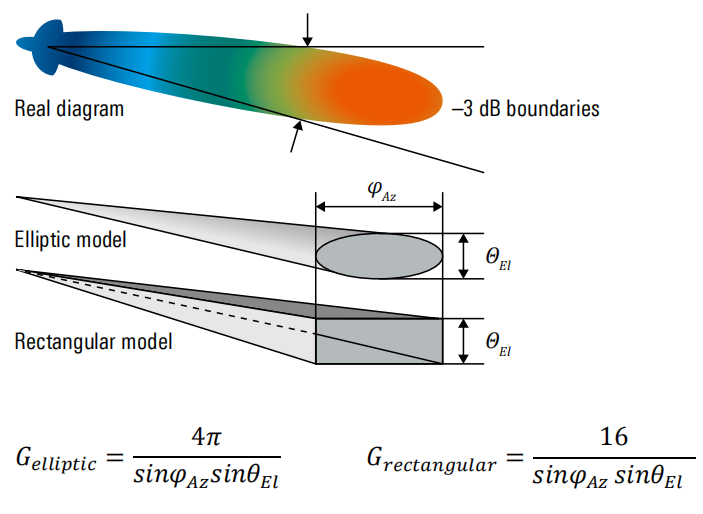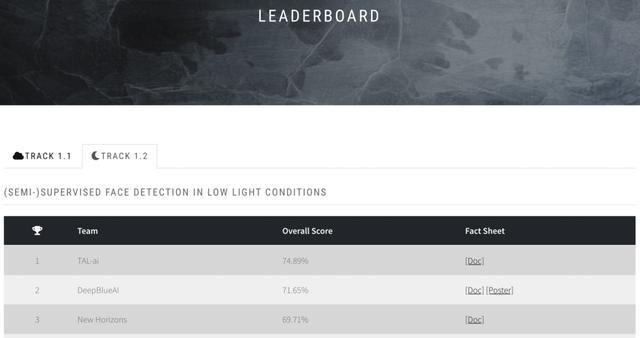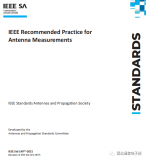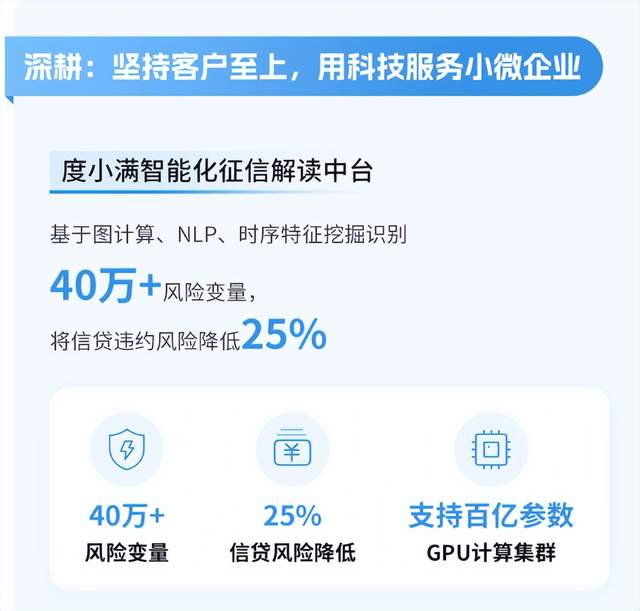最近整理了下AAAI2021 NLP论文各个细方向的接收列表!应该还有几篇漏网之鱼,之后发现了补上~ AAAI2021接收论文PDF查看地址如下: https://aaai.org/Conferences/AAAI-21/wp-content/uploads/2020/12/AAAI-21_Accepted-Paper-List.Main_.Technical.Track_.pdf
NLP细方向论文列表
情感分析
Learning Modality-Specific Representations with Self-Supervised Multi-Task Learning for Multimodal Sentiment Analysis
An Adaptive Hybrid Framework for Cross-Domain Aspect-Based Sentiment Analysis
Bridging Towers of Multi-Task Learning with a Gating Mechanism for Aspect-Based Sentiment Analysis and Sequential Metaphor Identification
Human-Level Interpretable Learning for Aspect-Based Sentiment Analysis
A Joint Training Dual-MRC Framework for Aspect Based Sentiment Analysis
Quantum Cognitively Motivated Decision Fusion for Video Sentiment Analysis
Context-Guided BERT for Targeted Aspect-Based Sentiment Analysis
Segmentation of Tweets with URLs and its Applications to Sentiment Analysis
A Neural Group-Wise Sentiment Analysis Model with Data Sparsity Awareness
句法分析
Encoder-Decoder Based Unified Semantic Role Labeling with Label-Aware Syntax
Code Completion by Modeling Flattened Abstract Syntax Trees as Graphs
Story Ending Generation with Multi-Level Graph Convolutional Networks over Dependency Trees
命名实体识别
Multi-Modal Graph Fusion for Named Entity Recognition with Targeted Visual Guidance
CrossNER: Evaluating Cross-Domain Named Entity Recognition
A Supervised Multi-Head Self-Attention Network for Nested Named Entity Recognition
Nested Named Entity Recognition with Partially-Observed TreeCRFs
Continual Learning for Named Entity Recognition
Knowledge-Aware Named Entity Recognition with Alleviating Heterogeneity
Denoising Distantly Supervised Named Entity Recognition via a Hypergeometric Probabilistic Model
MTAAL: Multi-Task Adversarial Active Learning for Medical Named Entity Recognition and Normalization
人机对话/问答
Reinforced History Backtracking for Conversational Question Answering
Quantum-Inspired Neural Network for Conversational Emotion Recognition
DialogXL: All-in-One XLNet for Multi-Party Conversation Emotion Recognition
Learning from My Friends: Few-Shot Personalized Conversation Systems via Social Networks
NaturalConv: A Chinese Dialogue Dataset Towards Multi-Turn Topic-Driven Conversation
Conversational Neuro-Symbolic Commonsense Reasoning
Keyword-Guided Neural Conversational Model
Infusing Multi-Source Knowledge with Heterogeneous Graph Neural Network for Emotional Conversation Generation
MultiTalk: A Highly-Branching Dialog Testbed for Diverse Conversations
Knowledge-Driven Data Construction for Zero-Shot Evaluation in Commonsense Question Answering
Reinforced History Backtracking for Conversational Question Answering
What the Role Is vs. What Plays the Role: Semi-Supervised Event Argument Extraction via Dual Question Answering
Regularizing Attention Networks for Anomaly Detection in Visual Question Answering50
TSQA: Tabular Scenario Based Question Answering
Unanswerable Question Correction in Question Answering over Personal Knowledge Base
Benchmarking Knowledge-Enhanced Commonsense Question Answering via Knowledge-to Text Transformation
Dynamic Neuro-Symbolic Knowledge Graph Construction for Zero-Shot Commonsense Question Answering
Asking the Right Questions: Learning Interpretable Action Models through Query Answering
HopRetriever: Retrieve Hops over Wikipedia to Answer Complex Questions
关系抽取
FL-MSRE: A Few-Shot Learning Based Approach to Multimodal Social Relation Extraction
Multi-View Inference for Relation Extraction with Uncertain Knowledge
GDPNet: Refining Latent Multi-View Graph for Relation Extraction
Progressive Multi-Task Learning with Controlled information Flow for Joint Entity and Relation Extraction
Curriculum-Meta Learning for Order-Robust Continual Relation Extraction
Document-Level Relation Extraction with Reconstruction
Document-Level Relation Extraction with Adaptive Thresholding and Localized Context Pooling
Entity Structure Within and Throughout: Modeling Mention Dependencies for Document Level Relation Extraction
Empower Distantly Supervised Relation Extraction with Collaborative Adversarial Training
Clinical Temporal Relation Extraction with Probabilistic Soft Logic Regularization and Global Inference
A Unified Multi-Task Learning Framework for Joint Extraction of Entities and Relations
事件抽取
GATE: Graph Attention Transformer Encoder for Cross-Lingual Relation and Event Extraction
What the Role Is vs. What Plays the Role: Semi-Supervised Event Argument Extraction via Dual Question Answering
Span-Based Event Coreference Resolution
机器翻译
Self-Supervised Bilingual Syntactic Alignment for Neural Machine Translation
Empirical Regularization for Synthetic Sentence Pairs in Unsupervised Neural Machine Translation8
Efficient Object-Level Visual Context Modeling for Multimodal Machine Translation: Masking Irrelevant Objects Helps Grounding
Lexically Constrained Neural Machine Translation with Explicit Alignment Guidance
Finding Sparse Structure for Domain Specific Neural Machine Translation
Meta-Curriculum Learning for Domain Adaptation in Neural Machine Translation
Guiding Non-Autoregressive Neural Machine Translation Decoding with Reordering Information
Synchronous Interactive Decoding for Multilingual Neural Machine Translation
Accelerating Neural Machine Translation with Partial Word Embedding Compression
DirectQE: Direct Pretraining for Machine Translation Quality Estimation
We Don't Speak the Same Language: Interpreting Polarization through Machine Translation
知识图谱
Dual Quaternion Knowledge Graph Embeddings
Type-Augmented Relation Prediction in Knowledge Graphs
ChronoR: Rotation Based Temporal Knowledge Graph Embedding
PASSLEAF: A Pool-Based Semi-Supervised Learning Framework for Uncertain Knowledge Graph Embedding
KG-BART: Knowledge Graph-Augmented Bart for Generative Commonsense Reasoning
Answering Complex Queries in Knowledge Graphs with Bidirectional Sequence Encoders
GaussianPath: A Bayesian Multi-Hop Reasoning Framework for Knowledge Graph Reasoning
Topology-Aware Correlations between Relations for Inductive Link Prediction in Knowledge Graphs
Learning from History: Modeling Temporal Knowledge Graphs with Sequential Copy Generation Networks
Neural Latent Space Model for Dynamic Networks and Temporal Knowledge Graphs
Knowledge Graph Embeddings with Projective Transformations
(Comet-) Atomic 2020: On Symbolic and Neural Commonsense Knowledge Graphs
Randomized Generation of Adversary-Aware Fake Knowledge Graphs to Combat Intellectual Property Theft
Dynamic Knowledge Graph Alignment
Dynamic Neuro-Symbolic Knowledge Graph Construction for Zero-Shot Commonsense Question Answering
阅读理解
Semantics Altering Modifications for Evaluating Comprehension in Machine Reading
Retrospective Reader for Machine Reading Comprehension
Reasoning in Dialog: Improving Response Generation by Context Reading Comprehension
VisualMRC: Machine Reading Comprehension on Document Images
A Bidirectional Multi-Paragraph Reading Model for Zero-Shot Entity Linking
Bidirectional Machine Reading Comprehension for Aspect Sentiment Triplet Extraction
Audio-Oriented Multimodal Machine Comprehension via Dynamic Inter- and Intra-Modality Attention
Semantics Altering Modifications for Evaluating Comprehension in Machine Reading
文本生成
A Theoretical Analysis of the Repetition Problem in Text Generation
TextGAIL: Generative Adversarial Imitation Learning for Text Generation
Towards Faithfulness in Open Domain Table-to-Text Generation from an Entity-Centric View
Perception Score: A Learned Metric for Open-Ended Text Generation Evaluation
Generate Your Counterfactuals: Towards Controlled Counterfactual Generation for Text
Write-a-Speaker: Text-Based Emotional and Rhythmic Talking-Head Generation
Stylized Dialogue Response Generation Using Stylized Unpaired Texts
知识蒸馏
PSSM-Distil: Protein Secondary Structure Prediction (PSSP) on Low-Quality PSSM by Knowledge Distillation with Contrastive Learning
LRC-BERT: Latent-Representation Contrastive Knowledge Distillation for Natural Language Understanding
Peer Collaborative Learning for Online Knowledge Distillation
Few-Shot Class-Incremental Learning via Relation Knowledge Distillation
Harmonized Dense Knowledge Distillation Training for Multi-Exit Architectures
Diverse Knowledge Distillation for End-to-End Person Search
Learning to Augment for Data-Scarce Domain BERT Knowledge Distillation
Data-Free Knowledge Distillation with Soft Targeted Transfer Set Synthesis
ALP-KD: Attention-Based Layer Projection for Knowledge Distillation
Progressive Network Grafting for Few-Shot Knowledge Distillation
Show, Attend and Distill: Knowledge Distillation via Attention-Based Feature Matching
Stochastic Precision Ensemble: Self-Knowledge Distillation for Quantized Deep Neural Networks
Reinforced Multi-Teacher Selection for Knowledge Distillation
少量或者零样本学习
Tailoring Embedding Function to Heterogeneous Few-Shot Tasks by Global and Local Feature Adaptors
Learning Intact Features by Erasing-Inpainting for Few-Shot Classification
PTN: A Poisson Transfer Network for Semi-Supervised Few-Shot Learning
Few-Shot Lifelong Learning
Partial Is Better Than All: Revisiting Fine-Tuning Strategy for Few-Shot Learning
Few-Shot Font Generation with Localized Style Representations and Factorization
Few-Shot One-Class Classification via Meta-Learning
Relative and Absolute Location Embedding for Few-Shot Node Classification on Graph
FL-MSRE: A Few-Shot Learning Based Approach to Multimodal Social Relation Extraction
Learning a Few-Shot Embedding Model with Contrastive Learning
Learning from My Friends: Few-Shot Personalized Conversation Systems via Social Networks
Looking Wider for Better Adaptive Representation in Few-Shot Learning
Few-Shot Class-Incremental Learning via Relation Knowledge Distillation
Attributes-Guided and Pure-Visual Attention Alignment for Few-Shot Recognition
Task Cooperation for Semi-Supervised Few-Shot Learning
SALNet: Semi-Supervised Few-Shot Text Classification with Attention-Based Lexicon Construction
StarNet: Towards Weakly Supervised Few-Shot Object Detection
Progressive Network Grafting for Few-Shot Knowledge Distillation
Few-Shot Learning for Multi-Label Intent Detection
Incremental Embedding Learning via Zero-Shot Translation
Task Aligned Generative Meta-Learning for Zero-Shot Learning
Knowledge-Driven Data Construction for Zero-Shot Evaluation in Commonsense Question Answering
Generalized Zero-Shot Learning via Disentangled Representation
DASZL: Dynamic Action Signatures for Zero-Shot Learning
Semantic-Guided Reinforced Region Embedding for Generalized Zero-Shot Learning
Extracting Zero-Shot Structured Information from Form-like Documents: Pretraining with Keys and Triggers
A Bidirectional Multi-Paragraph Reading Model for Zero-Shot Entity Linking
Leveraging Table Content for Zero-Shot Text-to-SQL with Meta-Learning
Meta-Learning Framework with Applications to Zero-Shot Time-Series Forecasting
Dynamic Neuro-Symbolic Knowledge Graph Construction for Zero-Shot Commonsense Question Answering
跨领域
Error-Aware Density Isomorphism Reconstruction for Unsupervised Cross-Domain Crowd Counting
SD-Pose: Semantic Decomposition for Cross-Domain 6D Object Pose Estimation17
Dynamic Hybrid Relation Exploration Network for Cross-Domain Context-Dependent Semantic Parsing
An Adaptive Hybrid Framework for Cross-Domain Aspect-Based Sentiment Analysis
CrossNER: Evaluating Cross-Domain Named Entity Recognition
Learning Cycle-Consistent Cooperative Networks via Alternating MCMC Teaching for Unsupervised Cross-Domain Translation
Cross-Domain Grouping and Alignment for Domain Adaptive Semantic Segmentation
Embracing Domain Differences in Fake News: Cross-Domain Fake News Detection Using Multi-Modal Data
跨语言
FILTER: An Enhanced Fusion Method for Cross-Lingual Language Understanding
On the Importance of Word Order Information in Cross-Lingual Sequence Labeling
XL-WSD: An Extra-Large and Cross-Lingual Evaluation Framework for Word Sense Disambiguation
GATE: Graph Attention Transformer Encoder for Cross-Lingual Relation and Event Extraction
多语言
How Linguistically Fair Are Multilingual Pre-Trained Language Models?
Synchronous Interactive Decoding for Multilingual Neural Machine Translation
Adversarial Meta Sampling for Multilingual Low-Resource Speech Recognition
Analogy Training Multilingual Encoders
Multilingual Transfer Learning for QA Using Translation as Data Augmentation
新bert改进模型
RpBERT: A Text-Image Relation Propagation-Based BERT Model for Multimodal NER
LRC-BERT: Latent-Representation Contrastive Knowledge Distillation for Natural Language Understanding
U-BERT: Pre-Training User Representations for Improved Recommendation
ActionBert: Leveraging User Actions for Semantic Understanding of User Interfaces
RareBERT: Transformer Architecture for Rare Disease Patient Identification Using Administrative Claims
DialogBERT: Discourse-Aware Response Generation via Learning to Recover and Rank Utterances
Degree Planning with PLAN-BERT: Multi-Semester Recommendation Using Future Courses of Interest
多模态
Audio-Oriented Multimodal Machine Comprehension via Dynamic Inter- and Intra-Modality Attention
SMIL: Multimodal Learning with Severely Missing Modality
RpBERT: A Text-Image Relation Propagation-Based BERT Model for Multimodal NER
Confidence-Aware Non-Repetitive Multimodal Transformers for TextCaps
Efficient Object-Level Visual Context Modeling for Multimodal Machine Translation: Masking Irrelevant Objects Helps Grounding
Learning Modality-Specific Representations with Self-Supervised Multi-Task Learning for Multimodal Sentiment Analysis
FL-MSRE: A Few-Shot Learning Based Approach to Multimodal Social Relation Extraction
Multi-Modal Multi-Label Emotion Recognition with Heterogeneous Hierarchical Message Passing
Multi-Modal Graph Fusion for Named Entity Recognition with Targeted Visual Guidance
Robust Multi-Modality Person Re-Identification
Deep Probabilistic Imaging: Uncertainty Quantification and Multi-Modal Solution Characterization for Computational Imaging
VMLoc: Variational Fusion for Learning-Based Multimodal Camera Localization
MUFASA: Multimodal Fusion Architecture Search for Electronic Health Records
Multimodal Fusion via Teacher-Student Network for Indoor Action Recognition
Dynamic Graph Representation Learning for Video Dialog via Multi-Modal Shuffled Transformers
Learning Intuitive Physics with Multimodal Generative Models
MERL: Multimodal Event Representation Learning in Heterogeneous Embedding Spaces
Theoretical Analyses of Multi-Objective Evolutionary Algorithms on Multi-Modal Objectives
Embracing Domain Differences in Fake News: Cross-Domain Fake News Detection Using Multi-Modal Data
Noise Estimation Using Density Estimation for Self-Supervised Multimodal Learning
Humor Knowledge Enriched Transformer for Understanding Multimodal Humor
MELINDA: A Multimodal Dataset for Biomedical Experiment Method Classification
责任编辑:xj
原文标题:【AAAI2021】NLP所有方向论文列表(情感分析、句法、NER、对话/问答、关系抽取、KD等)
文章出处:【微信公众号:深度学习自然语言处理】欢迎添加关注!文章转载请注明出处。
-
机器学习
+关注
关注
66文章
8118浏览量
130550 -
情感分析
+关注
关注
0文章
14浏览量
5217 -
nlp
+关注
关注
1文章
463浏览量
21819
原文标题:【AAAI2021】NLP所有方向论文列表(情感分析、句法、NER、对话/问答、关系抽取、KD等)
文章出处:【微信号:zenRRan,微信公众号:深度学习自然语言处理】欢迎添加关注!文章转载请注明出处。
发布评论请先 登录
相关推荐
labview列表框控件怎么用
NLP领域的语言偏置问题分析

labview多列列表框写入数据
python如何修改列表中的每一个值数据
python如何遍历列表并提取
python怎样让列表里的数相加
python列表和数组的区别
Python列表去重的4种方式

天线增益与方向图详解

人工智能nlp是什么方向
中国团队包揽CVPR 2021弱光人脸检测挑战赛前三名!高分论文已公开播

创造历史!商汤联合团队斩获CVPR最佳论文,推出首个“感知决策一体化”自动驾驶通用大模型

小样本学习领域的未来发展方向

如何测量天线的发射和接收特性





 AAAI2021 NLP论文各个细方向的接收列表
AAAI2021 NLP论文各个细方向的接收列表











评论